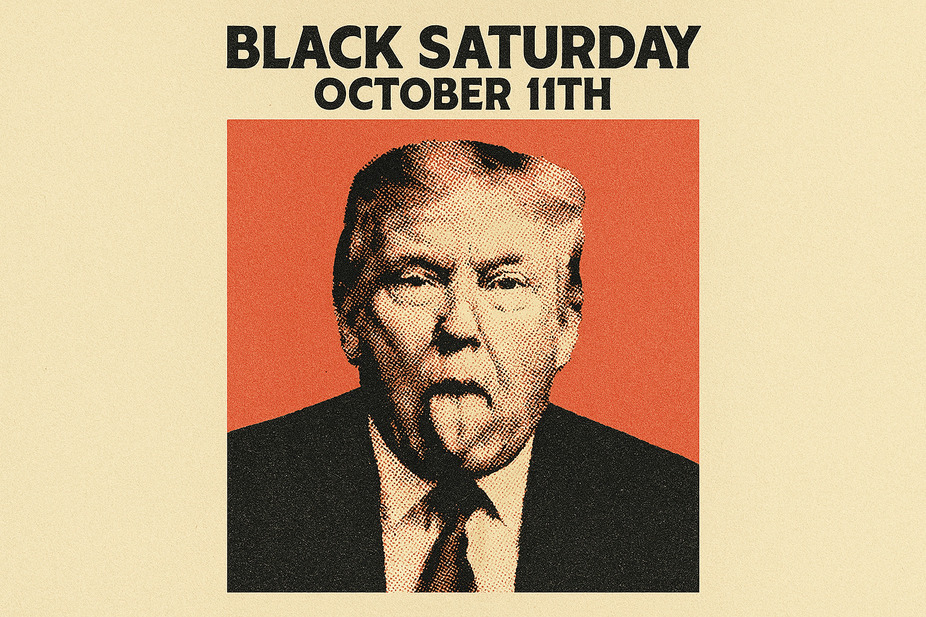Black Saturday, October 11th: What the heck just happened?

Imagine waking up to see the crypto market bleeding, and not just a little drip – we’re talking a full-blown hemorrhage. That’s pretty much what happened on October 11th, a day now being dubbed “Black Saturday” in crypto circles. The numbers are staggering: over $19 billion in liquidations, the highest on record. In just 24 hours, the total value of digital assets plummeted by an insane $660 billion, according to CoinGecko.
Bitcoin, the king of crypto, took a massive hit, dipping below $111,000 and even briefly touching $102,000 on Binance. Ethereum wasn’t spared either, dropping to $3,700. Most altcoins suffered double-digit losses, with big names like XRP, Solana, and Dogecoin each shedding around 20% of their value. The market’s collective mood, as measured by the Crypto Fear and Greed Index, plunged to a chilling 24, signaling “extreme fear.” (It has since recovered a bit, sitting at 38).
The Trump tweet and Binance woes: A double whammy?
So, what started this financial chaos? Analysts are highlighting a few key factors.
First, there was a tweet from US President Donald Trump on his Truth Social platform on October 10th. He mused about potentially imposing 100% tariffs on Chinese imports starting November 1st. This news spooked traditional stock markets first – the Nasdaq and S&P 500 both dropped significantly – and that negativity quickly spilled over into the already volatile crypto market.
But many in the crypto community suspect there was more to it, specifically issues with Binance, one of the largest crypto exchanges. Over 1.6 million traders saw their positions liquidated during the sell-off, with Binance and Hyperliquid bearing the brunt. This massive wave of liquidations on the biggest centralized exchange led some to wonder if it was a “coordinated attack” designed to trigger a broader market collapse.
Journalist Colin Wu was among the first to highlight this theory. He suggested that attackers exploited a vulnerability in Binance’s “Unified Account” feature. This feature allowed users to use the stablecoin USDe as collateral. The crucial detail? Unlike other platforms, Binance reportedly valued USDe not by real-time market data from oracles, but by its own internal order book. Binance apparently knew about this loophole and had a fix scheduled for October 14th.
The alleged attackers pounced on this “window of opportunity,” dumping $90 million worth of USDe onto the market. This caused the “stablecoin” to temporarily lose its peg to the US dollar, triggering a cascade of $1 billion in liquidations. The depeg also affected other staked assets like bnSOL and wBETH. To add insult to injury, it’s believed these attackers also opened short positions on Bitcoin and Ethereum on Hyperliquid just minutes before Trump’s tariff message, reportedly netting them $192 million in profit.
Binance did acknowledge that some liquidations were linked to the temporary depegs of USDe, bnSOL, and wBETH, and they promised to cover user losses caused by these specific incidents, eventually reporting $283 million in compensation on October 13th. However, they’ve denied any direct link between these depegs and the overall market crash. Some analysts, like Jian Zhu’er (as cited by Colin Wu), also dismiss the “coordinated attack” theory, suggesting the USDe depeg happened after the initial price collapse and pointing to poor wBETH liquidity as a root cause.
Community weighs in: fragility vs. opportunity
As always after a big market move, the crypto community had a lot to say.
Jordi Alexander, founder of Selini Capital, argued that the crash was simply a result of the market’s underlying “fragility.” He believes that in the frenzy of “FOMO” (fear of missing out), participants had forgotten about the inherent risks. He scathingly criticized the “zero self-awareness” he observed, particularly among those he saw hyping up questionable projects:
“In recent months I’ve been hearing ever more insane theses for buying coins… Solana traders used to flipping shitcoins in the mobile Phantom are trying to explain to me why this or that crappy perp-DEX is worth billions. Zero self-awareness about the game they’re playing… when we were literally flooded with liquidity and every launch came with a pile of money, fragility lay beneath it all.”
He even drew parallels to May 2021, another time when prolonged gains and low volatility lulled market participants into a false sense of security.
On the other hand, Simon Dedic, founder of Moonrock Capital, urged calm. He told his followers:
“We’ll be fine. We always are. I’ve been in this industry for 9 years now, and I’d say I’ve really seen it all. The COVID crash, the $LUNA meltdown, the FTX collapse, you name it. But what we witnessed yesterday felt very different…”
Dedic’s take was more optimistic. He argued that this crash felt different because it lacked the fundamental causes seen in collapses like FTX or LUNA. “Having analysed everything, my gut tells me this was a massive technical failure, not a fundamental one. And that is, in its own way, a bullish factor. Nothing fundamental in this industry has changed.” He challenged people to ask themselves, “How much do I truly believe in crypto over the long term?”
By October 13th, just two days later, Bitcoin had recovered above $115,000, and Ethereum was back up to $4,190, showing crypto’s typical resilience – or perhaps, its inherent volatility. Black Saturday was a brutal reminder that in crypto, things can change in an instant, and even the most seasoned players need to keep their wits about them.












